I was lucky enough to spend ten days in Costa Rica on the Camino de Costa Rica over Christmas. It was my first Christmas away from family and I did find that hard. Thankfully I had plenty of distraction in the form of wildlife, beautiful scenery, challenging hiking and great food.
The Camino
The Camino de Costa Rica is a 280 km long hiking trail that runs from the Caribbean cost to the Pacific Coast, crossing indigenous territory and the valleys and mountains of the central region. It was opened in 2018 by a local NGO as a means of improving he economic situation in the rural areas of Costa Rica. You can start the route at either coast and it generally takes between 12 and 16 days to complete with the record standing at just over 5 days. It is still relatively new trail and is estimated that only about 1000 people have completed it. I went with Much Better Adventures (MBA), a company I have used several times before and always had a brilliant experience. As a certified B Corps business, their mission is to build a positive impact travel company by partnering with local and independent businesses to offer small group adventure travel around the world. I challenge anyone to spend a few minutes on their website and not instantly find several holidays they want to go.
This particular trip was 10 days long with 8 days of hiking. We wouldn’t complete the full Camino, instead doing some of the highlights and chopping out some of the more tedious road sections. The online description was that it would be challenging but as it was also accompanied by pictures of beautiful blue sky and calm beaches I thought this would be a great way to spend the holidays.
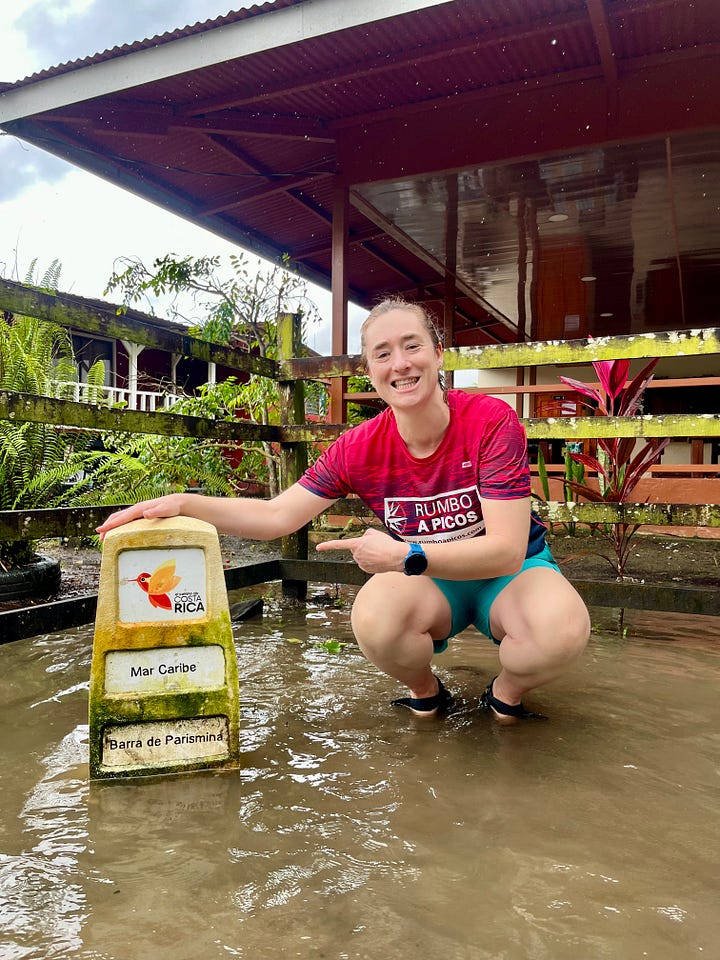
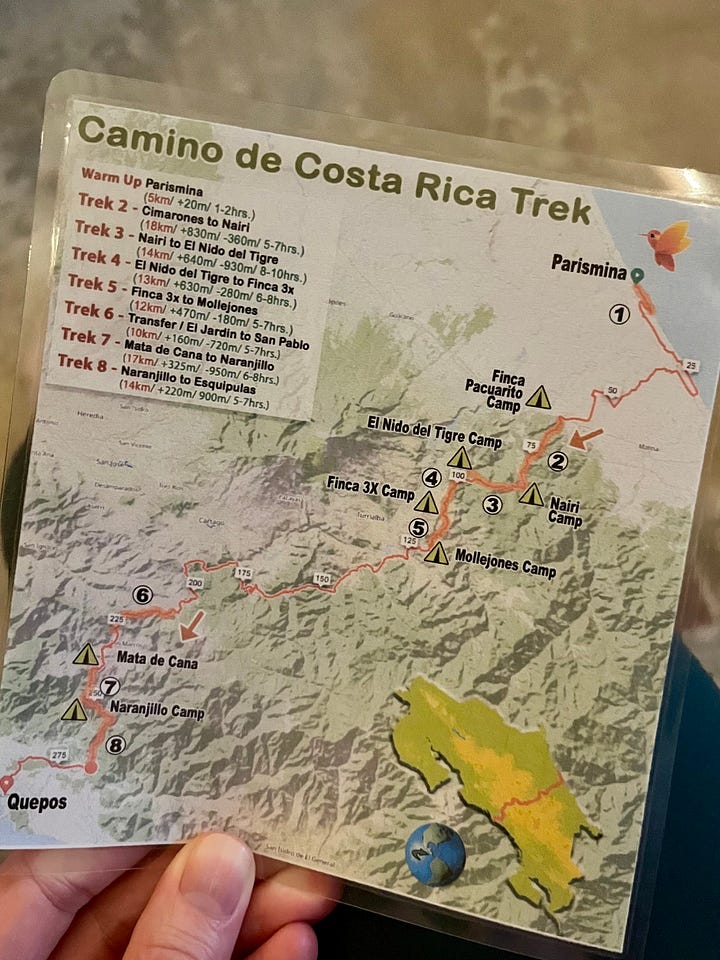
Led by a local company Coast to Coast adventures, we were only the second group to do this and I remember on day 1 our guide Mike telling me that it had rained every single day for the last group. My reaction was to laugh but 9 days of rain later I think the weather gods were the only ones laughing. Mike arrived in Costa Rica on a motorbike from Canada 35 years ago and has been there ever since. He was fantastic – a wealth of knowledge, calm, experience and a library of adventure stories from his life. We also had a local guide Miso for the days on the Caribbean side and in the jungle. Miso arrived to meet us with wellies on, a limp, a simple dry bag on his back and with no English. He turned out to be the best guide you could ask for. There is honestly no one else I would want to walk through the jungle with. I quickly learnt some basic Spanish from him – notably the words for be careful and stop! On the occasions we had phone signal I would use google translate to ask Miso more questions learning which football team he supports, his favourite food (pollo), his favourite place in Costa Rica (his Pueblo), and more about his son Joshua of whom he was very proud.

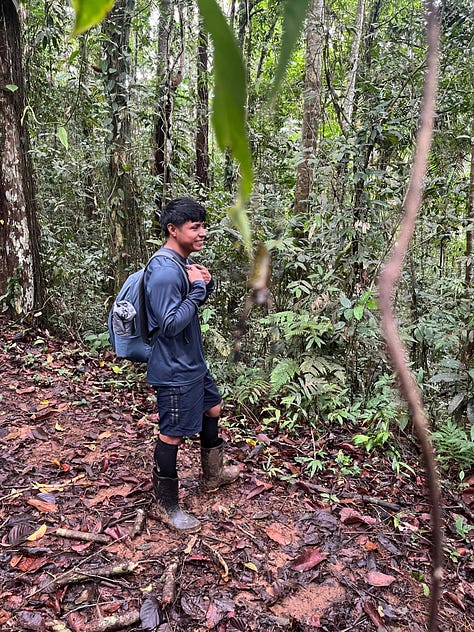
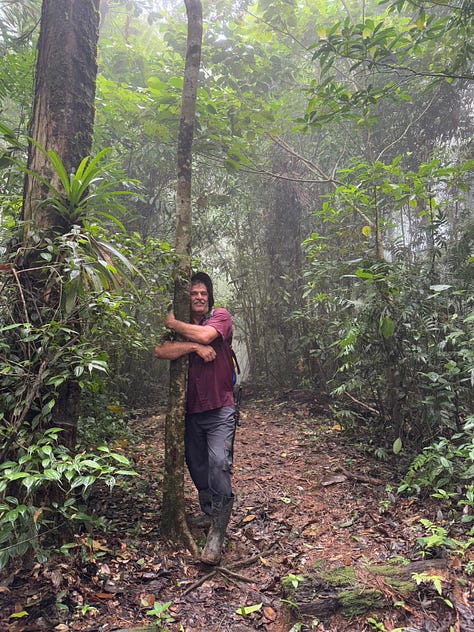
The drive from San Jose went through some of the banana plantations – I made a joke at the time about ‘big banana’ but have done some reading since being back about the challenge of the high pesticide use in the country and the impact on locals and workers. The plantations are largely centred in some of the poorer regions of the country.
Reaching the Caribbean coast, we eased into the hiking on day 1 with a 5k hike along the beach where we saw several types of monkeys, lots of leaf cutting ants and several tropical birds. After lunch we had an hour-long ride on an open top boat. It was what I can only describe as type 2 fun – not fun at the time but you can look back with rose tinted glasses. The whole boat ride was into driving and horizontal rain. Thankfully I had #slothwatch to distract me. One of my nieces has recently become the owner of a giant sloth Stanley who has been taking my place on the sofa to watch strictly come dancing so I had promised her I would do my best to see a sloth (Perezosos in Spanish). On this occasion I failed but Sara in our group did spot a cayman so we circled back to take a closer look.
The hiking was tough once we got going., especially for the first couple of days. The first proper day was 17k, largely uphill and through quite a lot of mud. The hardest thing was probably the humidity and remembering to drink enough even when it was raining. The next day was billed as the hardest day and as we were crossing the indigenous land we were required to have a guide from that community. Our guide Jimmy (also in wellies) grew in confidence over the day, though forgot his lunch and machete, both essential items for a day in the jungle. We started early and had to negotiate a river crossing soon into the day. The hike was just over 14k, and we climbed over 700m in elevation. It was quite technical, and I was grateful for my poles, especially in the muddier sections. A high/low light was Jimmy and Miso finding a poisonous snake by the side of the path. Not the species that would have outright killed us but still one that would have called for a fairly rapid evacuation. I have no idea how they spotted it but it really demonstrated the value of people with local knowledge and how much respect we should always pay to the land. There is very little known about the history of the Cabecar people with a real scarcity of written historical documents. Jimmy gave us a tour of a local house and we walked past the local school. I was impressed all over Costa Rica with the presence of a school in every community – they clearly place a real value on education. As the day went on we realised Jimmy spoke more English than he was letting on and by the end of the day he had revealed he would shortly be going off to University to study English.
Christmas day we did a short but hideously steep and slippery walk up to a cabin Mike had build during lockdown to find phone signal. It was good to have a chance to rest the legs a little as the following day was another 14k split into two chunks and with some hefty climbs. We started with a scramble up to a waterfall for a swim and then climbed continuously aiming to catch one of the local buses to avoid a road section. Miso did a brilliant job of slowly but surely increasing the pace up the final hill and we made the bus with seconds to spare. I would like to apologise to everyone on the bus for the smell of us and I completely understand why many of you chose to bury your faces in your t-shirts.
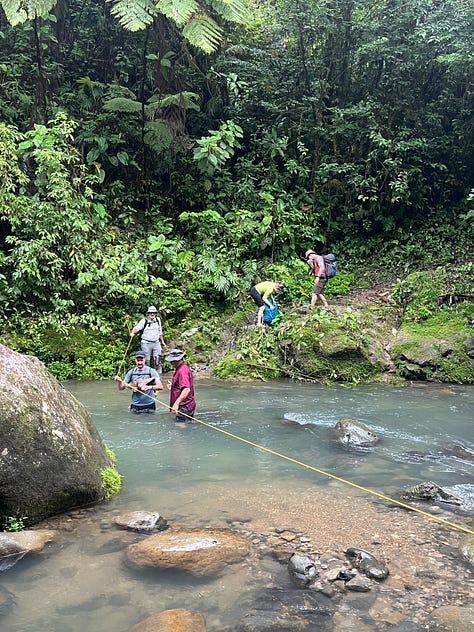
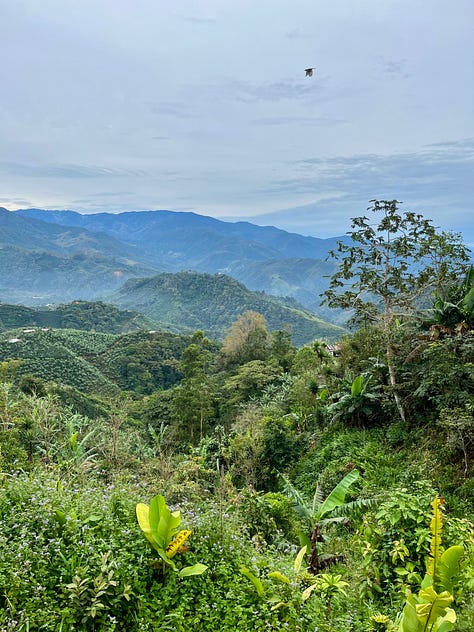
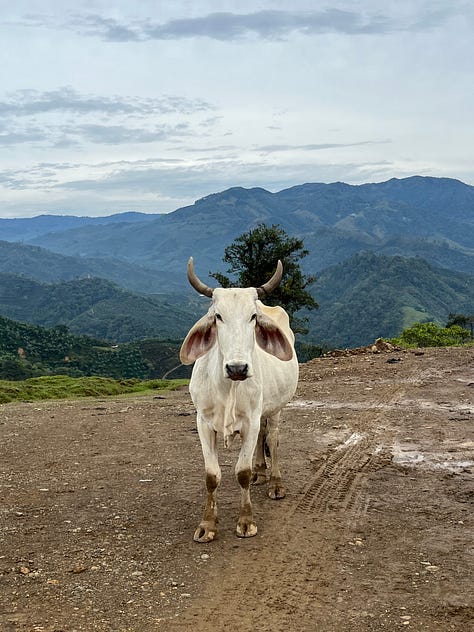
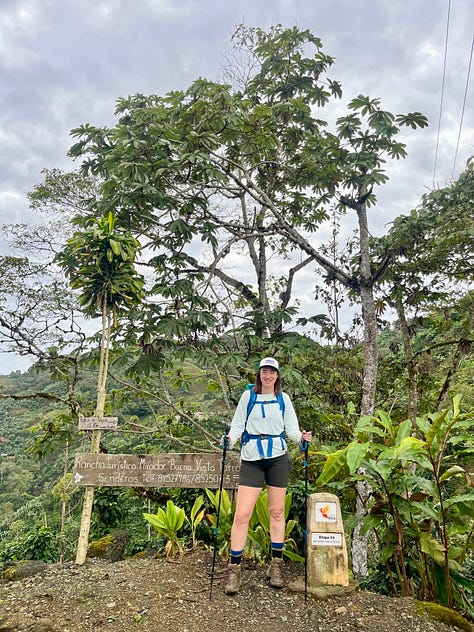
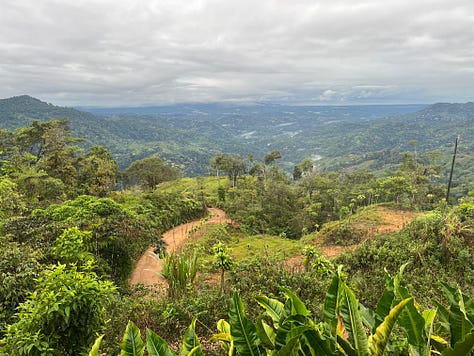
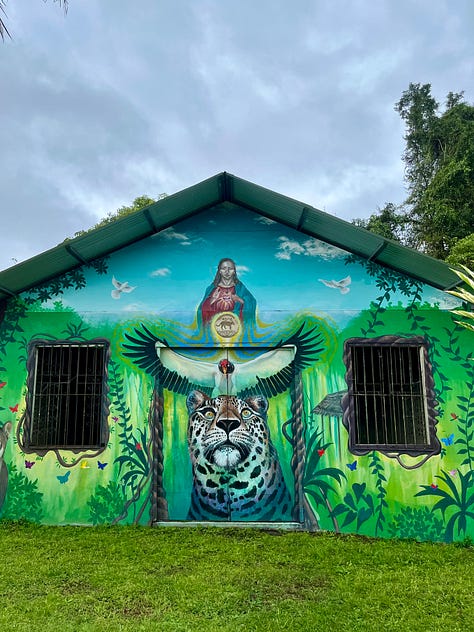
On the 5th day of hiking, we got a bus transfer over to the pacific side of the country skipping out some more of the road sections. The hike that day was not very far and both Dave and I had slightly itchy feet, so we elected to do an extra 3k to camp. I am renowned for being a fast walked but my word Dave was rapid – I was almost running to keep up with him as we negotiated the roads through coffee farms. The next two days of hiking were largely on coffee roads and winding down the hill again to the coast. It was amazing how much the landscape changed over the course of the Camino and I loved seeing up close the coffee fields, processing plants and pickers. Most of the pickers were met were from Panama and we saw whole families, including some teenagers doing back breaking work in pretty tough conditions. We learnt they get $3 per basket of beans but only if the basket passes the quality test. The coffee fields are interspersed with banana trees planted deliberately to provide shade. It was on these days that I wished I knew more about birds as we saw and heard some beautiful species including kites and lots of Oropendolas.
Throughout the whole trek we only met two other groups of hikers. We did meet a lot of Ticos (locals) who always greeted us with a smile and shout of ‘Pura Vida’ – which means pure life. I have no doubt life in some of those mountain villages is really tough but walking through in holiday season I was struck with how similar we are the world over – there were Christmas trees on balconies, music playing, families gathered and even a blow up Santa!

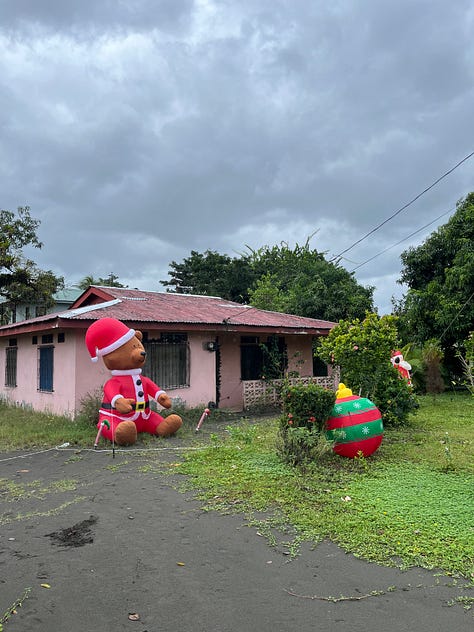
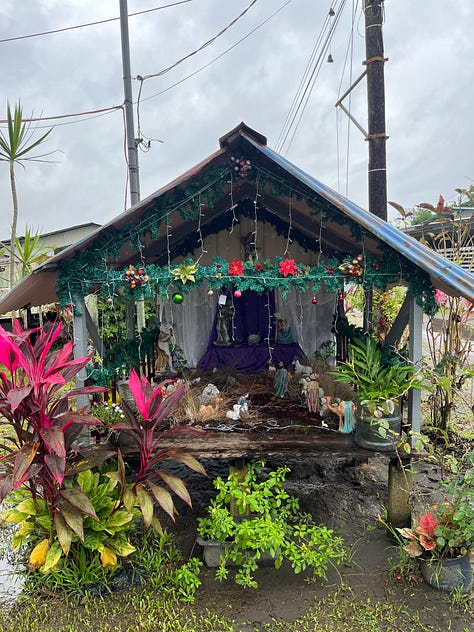
In total we walked about 100k, gained and lost a lot of elevation and saw several contrasting sides of the country. I think I would have struggled to do the full 16 days and think the itinerary we followed gave a perfect mix of landscape and terrain while limiting the time spent on the road.
The camping
Part of the ambition of the Camino was to boost rural tourism and villages and communities have responded to that in different ways offering home stays, building campgrounds and developing their community centres. The company we went with own two of their own campgrounds, so we were very spoilt to spend the first night in one of them. Very simply built there is no hot water, electricity or phone signal but each tent has it’s own platform and you go to sleep to the sounds of the jungle (or in our case the relentless heavy rain). We spent the next night in a campground built by the indigenous Cabecar community in the village of Tsiobata. The camp occupied the most beautiful spot on the side of a mountain, alongside some pretty basic facilities. My main memory from that night is the 4 giant spiders that I shared a platform with and the sound of the cockerels very early in the morning. The next day we hiked further into the jungle and arrived covered in mud that evening at El Nido del Tigre, another camp owned by coast to coast. What a beautiful spot. On the banks of the Pacuare river we first had to negotiate a cable crossing that helps connect the five-star eco lodge on the other side. If you ever want to feel better at crossing a river away from a five star eco lodge then read this.
Our camp was again beautifully simple but very well designed. The two-story social space had several hammocks to rest weary legs and catch up on some reading. We were greeted on arrival by several hummingbirds and a plethora of butterflies. By this point it had rained pretty much solidly and a decision was taken to spend two nights here instead of pressing on. I was thrilled with this decision. The next camp had been described as one where we ‘might get wet’ and I did not fancy spending my Christmas evening trying and failing to escape the inevitable rain. This also gave us a day to have a little rest and for those in the group who were suffering with illness to recover. It also gave me a chance for a decent night’s sleep with a mattress, and pillow in my tent and the sounds of the river.
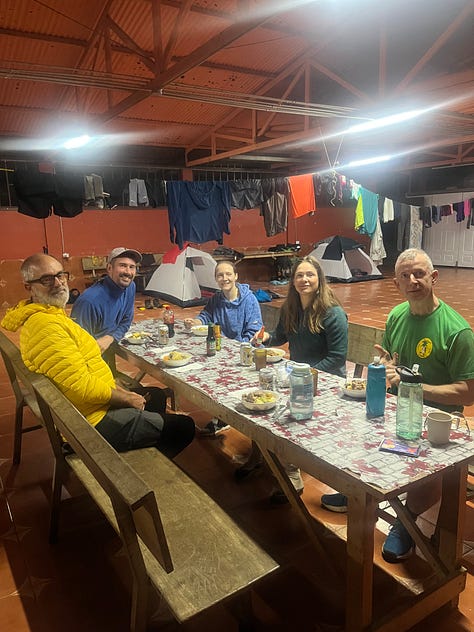

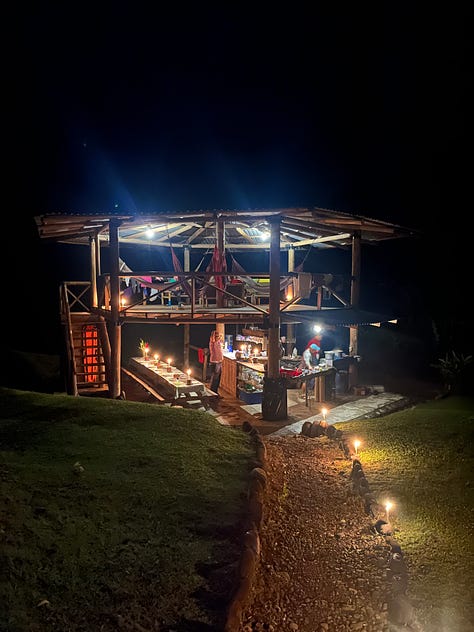

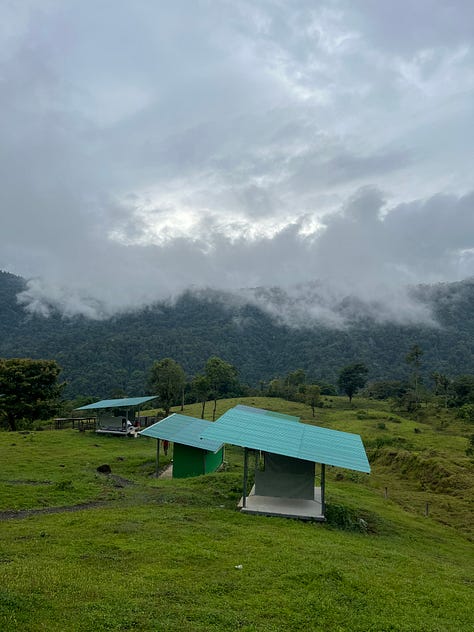
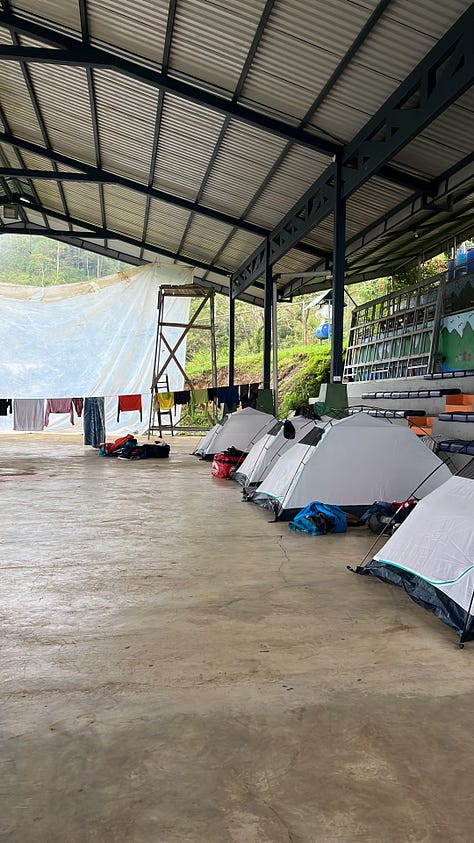
Leaving the jungle, we headed up into the mountains and to the village of Mollejones. There had been much talk in the group all week about ‘Mollie Jones’ as this was the home of our amazing local guide Miso. We set up camp in the community centre on a very hard concrete floor and once again set up a completely pointless drying line. Mollejones is home to less than 300 people but they have embraced the opportunities of rural tourism and in addition to accommodation will also offer cultural activities, they also have a village sloth who was sadly asleep while we were there. The community centre was next to the school which currently has 12 pupils and 4 of them came to perform for us that evening as part of the local dance troupe. Set up by Miso’s wife Marjorie this group is trying to keep local traditions alive while also contributing to the economy. As it was holiday season, we had a much smaller (and younger) version of the group which I think was actually a bit of a relief to us all. Technical issues delayed the start and so we got to have a short Q&A session with the kids – the universal language of football comes in very handy in moments like this and I loved listening to 8 year old Santiago proudly introduce himself to us in English. They performed a few traditional dances, and it was then our turn. I got to wear the giant skirt and can confirm it is heavier than it looks. There is a video of our performance, but it is being kept in a locked vault until a sufficiently high bribe is received. Early in the trip Mike had suggested it may be nice if we could also share something cultural back and make it more of an exchange. Thankfully in our group we had Dave, the proudest Welshman you will ever meet who was also briefly part of a Welsh Men’s Voice choir and had spent some of the jungle day singing to the great delight of Miso. Dave did us all proud with a rousing rendition of ‘Sosban Bach’ (the little saucepan).
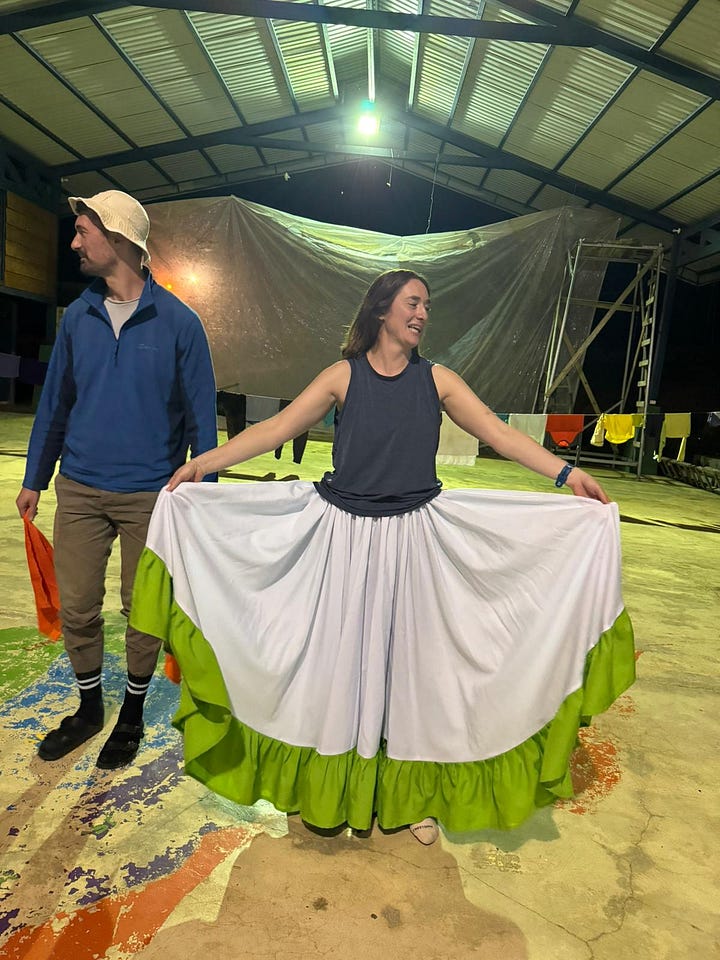
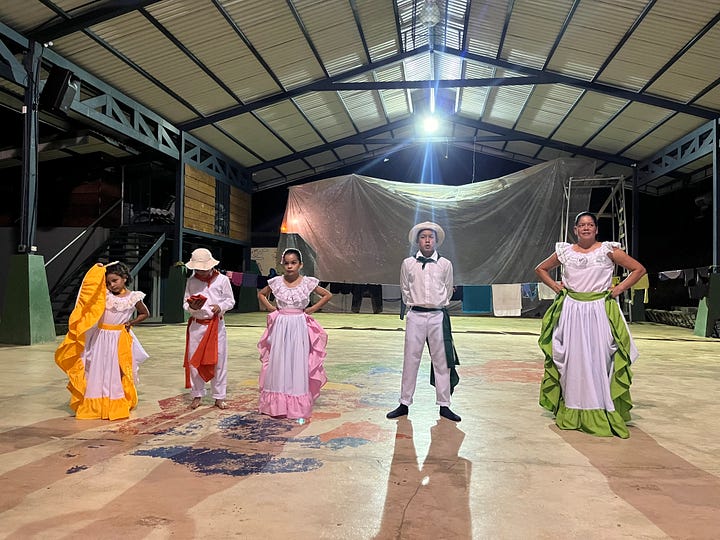
The next night we stayed in another community centre – this time in the coffee area and had the massive bonus of hot water. Before anyone gets too excited you could only get hot water if you sacrificed any form of water pressure and so it was a delicate balancing act. We were woken early here by the sound of the coffee trucks transporting both beans and people to and from the fields to the processing plant.
The final camp was perched high on the side of the mountain overlooking the Pacific Ocean. All day Mike had talked about the amazing sunset we would get but about 15 minutes out it started to rain and stayed raining for the next 12 hours. This camp was built by a local farmer and has tremendous potential but needs a little more work and attention to safety to get there. I had the slightly unfortunate experience of falling through a rotten plank in the sleeping platform and so spent the night on the floor in the social space next to Mike in his giant hammock. This camp was a popular spot for bugs and some of the biggest moths I have ever seen. The morning brought the view which pretty much made up for the emerging bruises covering my legs.
The food
When you are hiking for 8-10 hours a day, the food is very important, and I have to say this was some of the best food I have ever had on this kind of trip. Most of our meals were cooked by the support driver Memo who has been part of the company for 25 years and was not just a fantastic cook but also ensured all our bags were transported safely and even popped the tents up one evening. Memo barely looked old enough to have kids, but it was extra special when we got to spend Christmas day with his son Jeffrey who was working as a guide on another trip going in the opposite direction to us. The company is a real family business as then on our last day we met Mike’s son Christopher leading a MBA group off biking.
Most days started with eggs, gallo pinto (rice and beans), fruit and bucketfuls of coffee, often enjoyed at 6am. Lunch was a mix of picnics, roadside restaurants and sandwiches. We were always greeted at camp with more fresh coffee and a giant bag of highly addictive plantain crisps. Dinners often involved more rice and beans alongside some kind of protein.
Some of the highlights.
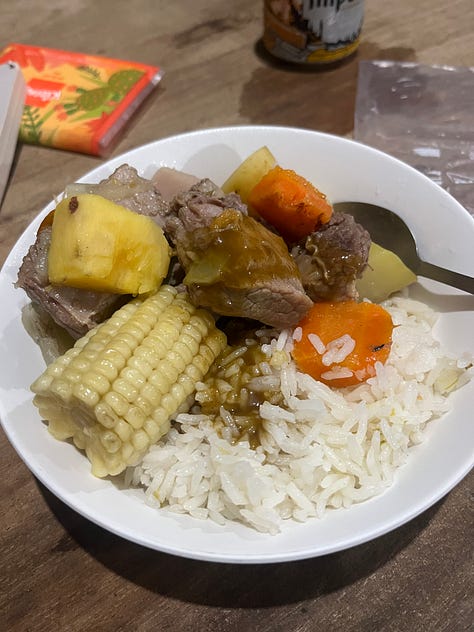
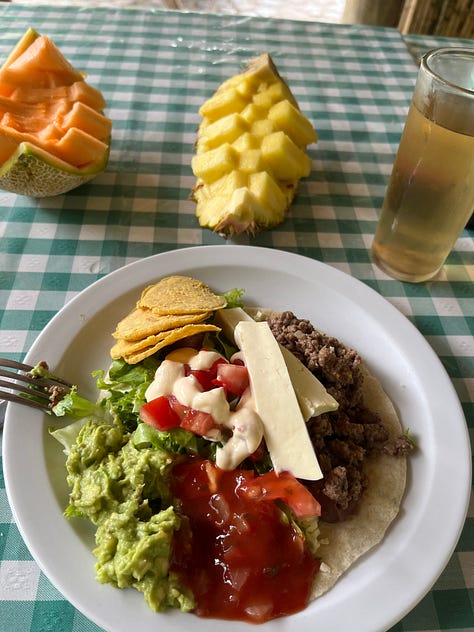
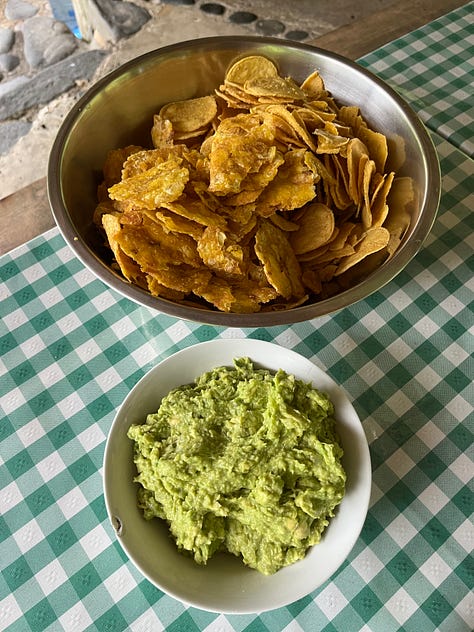
Everything was freshly cooked, abundant and just what you needed.
At our final camp we also got to do a ‘Clase de cocina con el tio Memo’ and learn how to make empanadas and garlic fried yuca. We did this on an incredibly simple set up using Memo’s portable gas burners he transported everywhere and aside from slight frustration from Memo with how slowly we peeled the yuca I think we did a pretty good job!
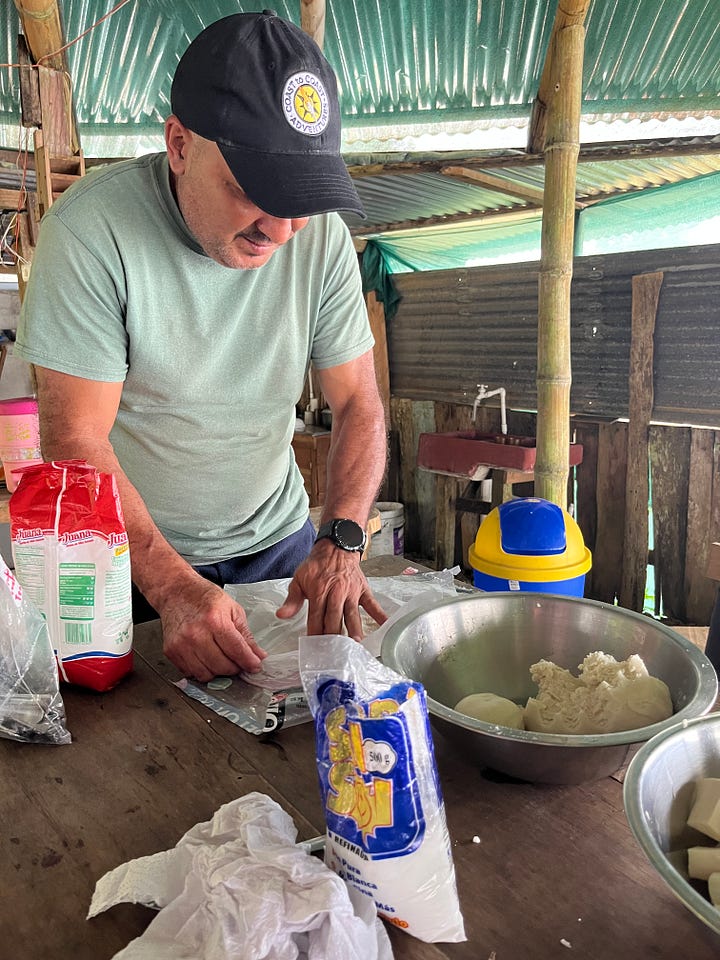
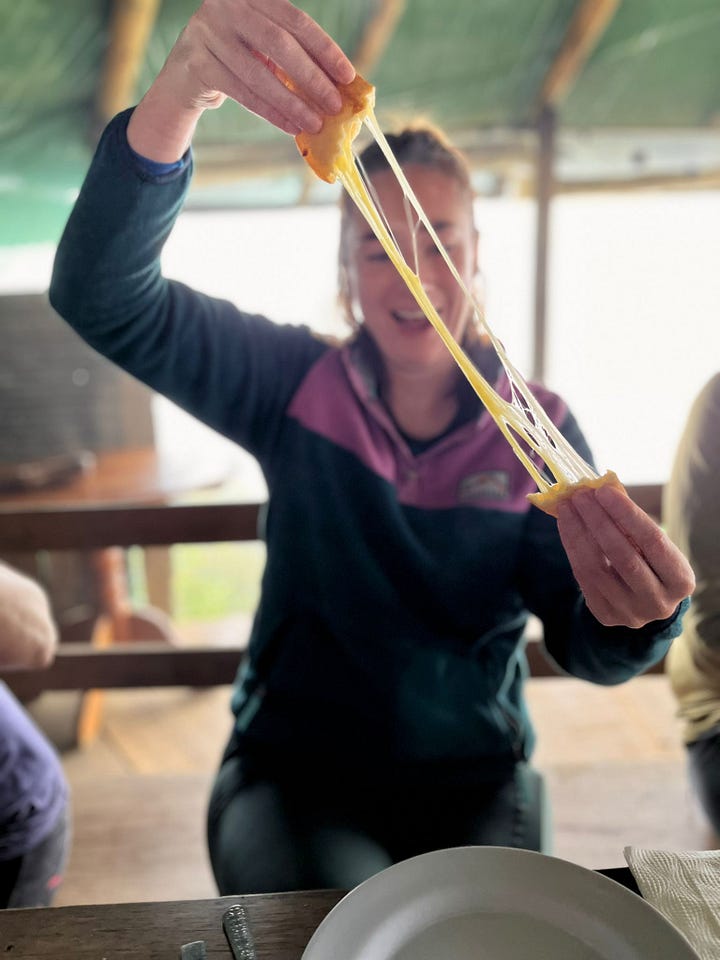
The people
There isn’t much more to say about the people. We were very lucky with the guides, but I also got the impression that everyone who works for Mike is equally brilliant and passionate about what they do. I was very struck by how proud all Costa Ricans were about their country and how much they wanted to show it off, even when speaking no English. We met a farmer fixing the road one day and stopped to talk with him. He had arrived in costa Rica from Nicaragua 40 years ago to escape conflict and was quick to tell us everything it had given him in return. Doing my best to follow his Spanish I heard him ask mike where we were from and then if the political situation in Inglaterra was tranquilo?!?!
It is always a risk with a group holiday that the other people may not be to your taste. Personally, I find it is usually a risk worth taking to allow you to do the things you want to do. There is no way I would manage this type of thing on my own! There’s also an element of self-selection for people willing to spend their Christmas doing a challenging hike and you can easily occupy several days of chat comparing notes on other trips everyone has done. I have learnt which topics to avoid (politics being the main one) and some emergency questions to have up my sleeve for when things get more difficult – a firm favourite is asking people to list their top 5 potato-based products, though this time it was slightly misinterpreted and led to one person listing king Edward, Jersey royal…….

The most important qualities I now look for in my fellow travel companions is people of a similar fitness, who don’t faff, who are not late and who do not moan. This group ticked all of those boxes.
The animals
I have already mentioned quite a few of the animals we saw on our travels, but it took getting back into civilisation and the tourist district to find a sloth that was awake. We also saw some more capuchin monkeys and mackaws who I assume flock to feed off the tourist scraps. At various points I had the taxi driver joining in #slothwatch and even on the way back to San Jose at the end Mike did a pit stop so we could see some crocodiles.
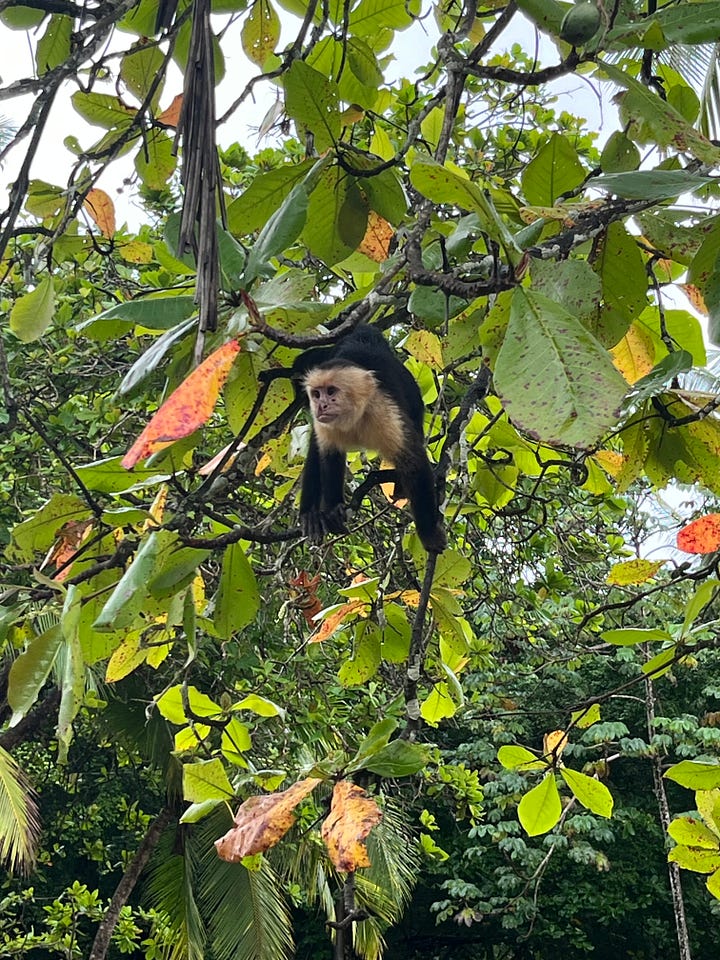
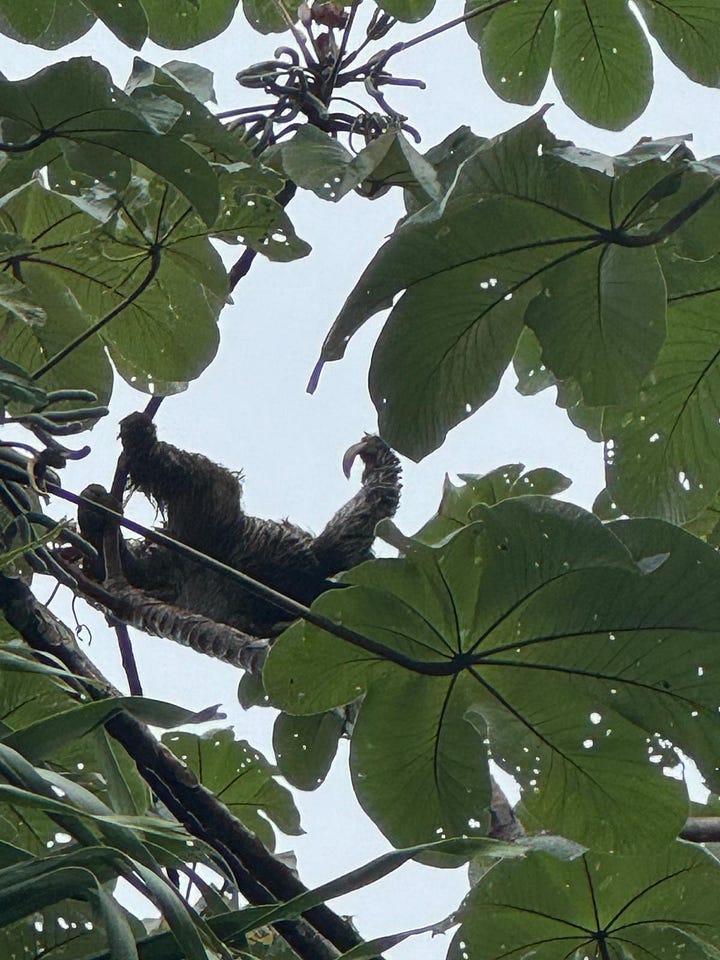
All in all it was a fantastic trip and I am really glad I made the decision to go. I would probably not have visited Costa Rica had this trip not been running over Christmas day, but it is going high on my list of recommendations. I realise I only saw a very small, and very remote slice of the country and I know there are challenges with high numbers of tourists in some areas.
There was a lot of traffic on the roads and every journey took far longer than expected. However, some of my fellow travellers have stayed on and their photos are spectacular, not least because the sun is shining!
It was a unique way to spend Christmas though I did come home craving pigs in blanket. I found coming back to Baltimore a bit tricky – I had really started to hit my stride before Christmas, but this elongated break and missing friends and family had disrupted my rhythm. I know this will pass and in the meantime, I have enjoyed watching the Gavin and Stacey Christmas special on Britbox and attempting my own version of a Christmas dinner (side note but maple sausages wrapped in maple bacon is too much, even for me). I am trying to get back into a routine and have started reformer pilates. We had the first snow of the season yesterday and it is forecast for a heavy storm tomorrow night. It is only 2 weeks before the next visitor arrives and only 8 months before I am due back in the UK. Time certainly flies and I am determined to make the most of it all. My main resolution for 2025 though is to read more and spend less time on my phone. So my first book recommendation is ‘Changing Places’ by David Lodge. Before I left the UK, one of my team recommended it to me as it was written by someone who had done the Harkness Fellowship in 1964. I really enjoyed it and was amazed at how much of it still rang true today.
Thanks for reading and Pura Vida x




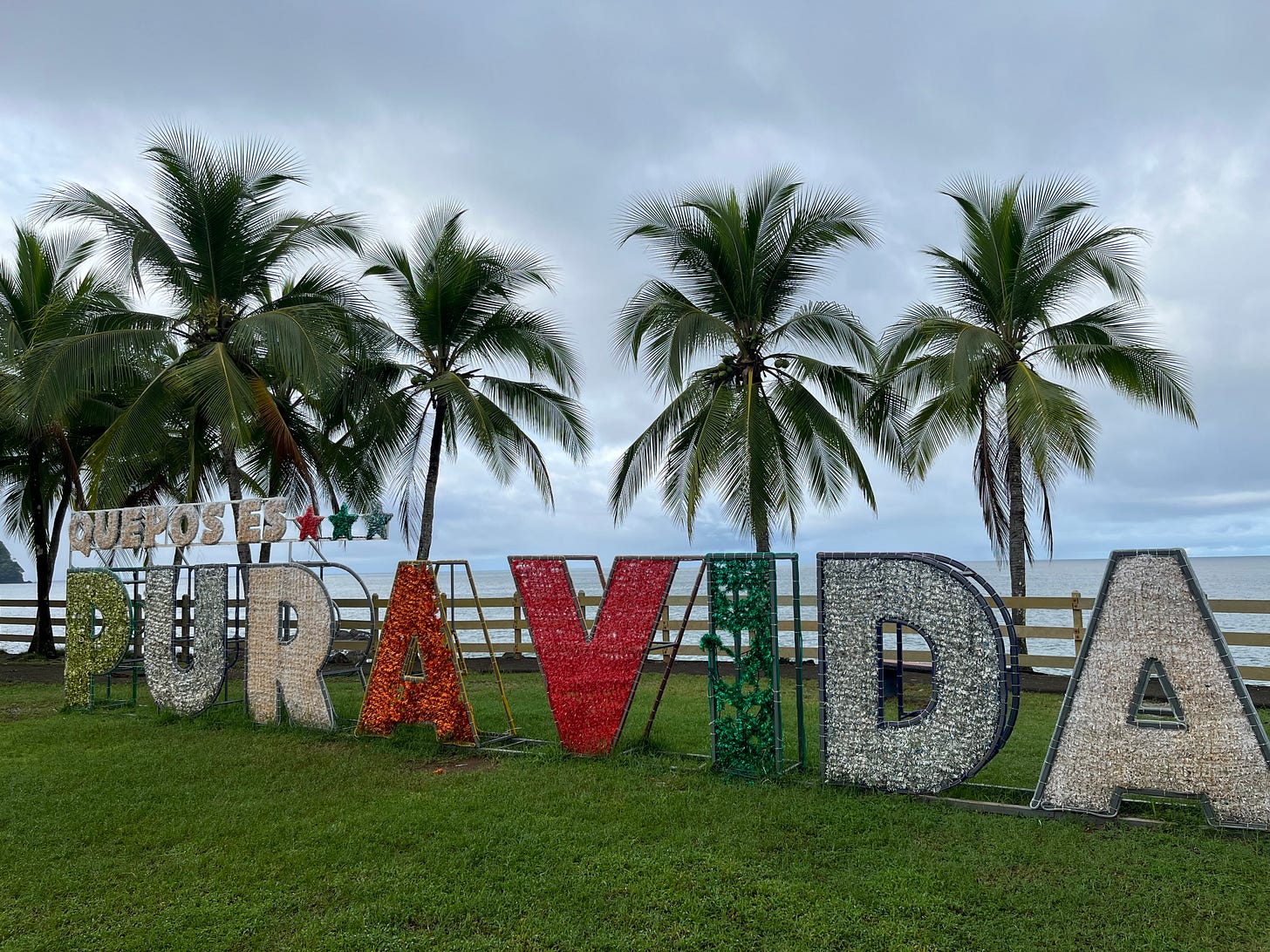
Lovely to read this reflection of our jungle adventures. Is it the journey or the destination? Neither - it’s the company, and I feel enormous gratitude to get to travel and meet some amazing people along the way! Safe travels Cat.
Sara
What an amazing adventure - so well described. As you say -the fellow trekkers and the guide(s) make all the difference -gold dust if you get good ones. For me reminiscent of a medical trek I did in Kashmir back in the day - same attitude of indigenous people towards us and same dwellings the World over -just different materials. The one thing that totally hit home was the contrasting footware -the wellies of the guides and the climbing boots of the trekkers. In my case the horsemen wore plastic sandals - even at 15,000feet !
Thank you for sharing your experience
Duncan